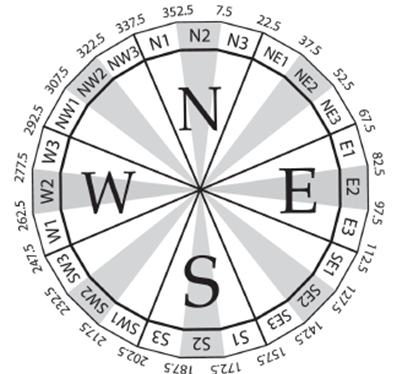
You may have heard the saying that “The shortest distance between two points is a straight line.” That concept might get turned on its head when we become more conversant about how factors of time and gravity influence distance, but for now we can appreciate that this statement as relatively true.
Different shaped buildings and interior architecture direct energy and air currents in predictable ways. We call it “qi flow” in feng shui parlance. Sometimes, just by looking at a shape, we get a sense of how the energy will move. This includes round shapes, triangular shapes as well as the L-shape, and the “Z” zig-zag shape. We have a sense of what shapes create a smooth flow and which shapes conduct a more chaotic or restrictive flow of energy. I have separate case study plans just on the Triangular shape and the Round shape.
Additionally, we have environments where the force of energy moves in a centrifugal or centripetal direction and these two directions can also be categorized within Yin Yang Theory. Like the way water swirls down a drain from a wider radius to a narrower one, this is an example of centripetal force. From the center and expanding outwardly, we have centrifugal force. The energy can also move upwards (yin) or downward (yang.)
On a practical level, when I describe Construction Sha, the precarious directions each year for remodeling, these directional flows can move outwardly from the center point of the house as well as inward from the outer radius of the property.
Because of the way qi moves, without restrictions from interior design or architecture, the centripetal and centrifugal forces contradict the notional way that we grid out floor plans. In particular, the Eight Mansion Nine Palace Grid method produces directional zones which are square or rectangular in shape. This is likely not the way that energy settles into place in a floor plan.
In contrast, directional concepts are better conveyed with the di li (pie shaped) way of gridding out a floor plan. Both methods are “notional” to quote my pal Heluo. As he says, “Qi is its own man. It goes where it wants to go.” And yet, we can predict with a good degree of accuracy, where the directional qi settles inside a floor plan. We usually have a good amount of space to work within, when it comes to making adjustments to the magnetic field.
That said: it is ideal to place an elemental adjustment securely within a directional sector and not on the border line between sectors. An exception to this is the theory that the sitting sector can determine the best location for all the elemental adjustments. For example, if a house “sits” West-1 range (compared to West-2 or West-3), then ALL the adjustments are better placed within the first sector of all the directions.

If a house “sits” in the 3rd range of a sector, then the adjustments are best located in North-3, Northeast-3, East-3, Southeast-3, etc. This is just one example of how and why the sector method is more nuanced and specific than the Nine Palace Grid method. With the sector method, each of the eight basic directions has a 45 degree range and they can be divided into 15-degree sub-sectors.
Author: Kartar Diamond
Company: Feng Shui Solutions ®
From the Feng Shui Theory Blog Series

